Through Antanas Procuta’s well-trained eyes, Cambridge is an architectural masterpiece.
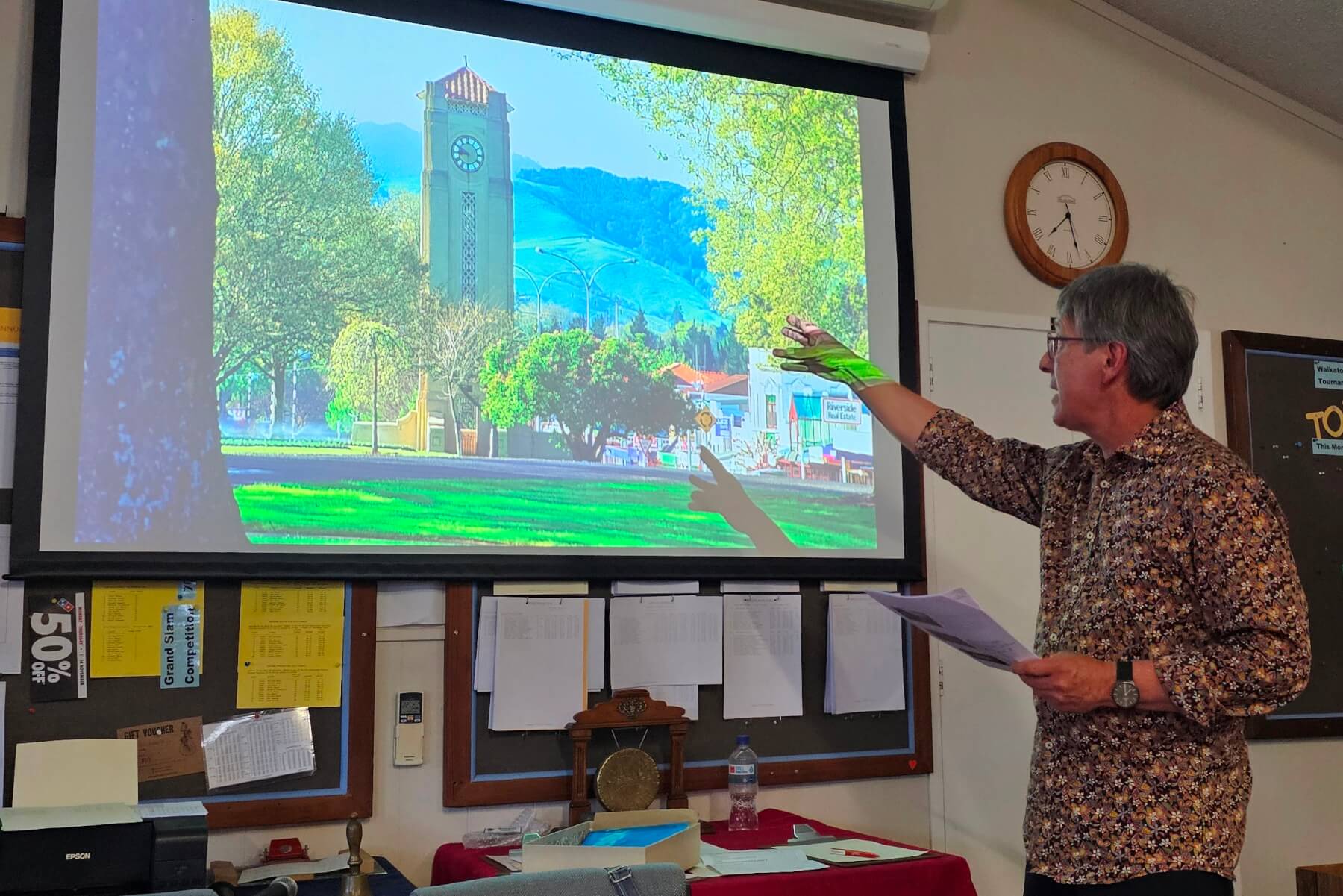
Architect Antanas Procuta points to the Town Clock, his favourite building in Cambridge. Photo: Mary Anne Gill.
Speaking at the Cambridge Historical Society’s annual meeting last week on The Pattern of Cambridge: An Architectural and Urban Design Perspective, Procuta acknowledged the town’s benefactors and champions who made the town what it is today.
“Cambridge township owes a hell of a lot to our forebears who created this place and I guess the key message is that it did not happen by accident. There was a lot of design intent that happened generation after generation by individual people and groups of people that have made this the place it is.”
Planning started as early as 1863, at the start of the New Zealand Land Wars, when surveyors mapped out the town and created green belts long before renowned English town planner Ebenezer Howard founded the garden city movement, blending towns and cities with nature.
“It’s poignant from the point of view that this place that we love so much Cambridge…. much of the land was confiscated which is still distressing to Māori.
“We’ve got this wonderful place which at the same time caused so much hurt.”
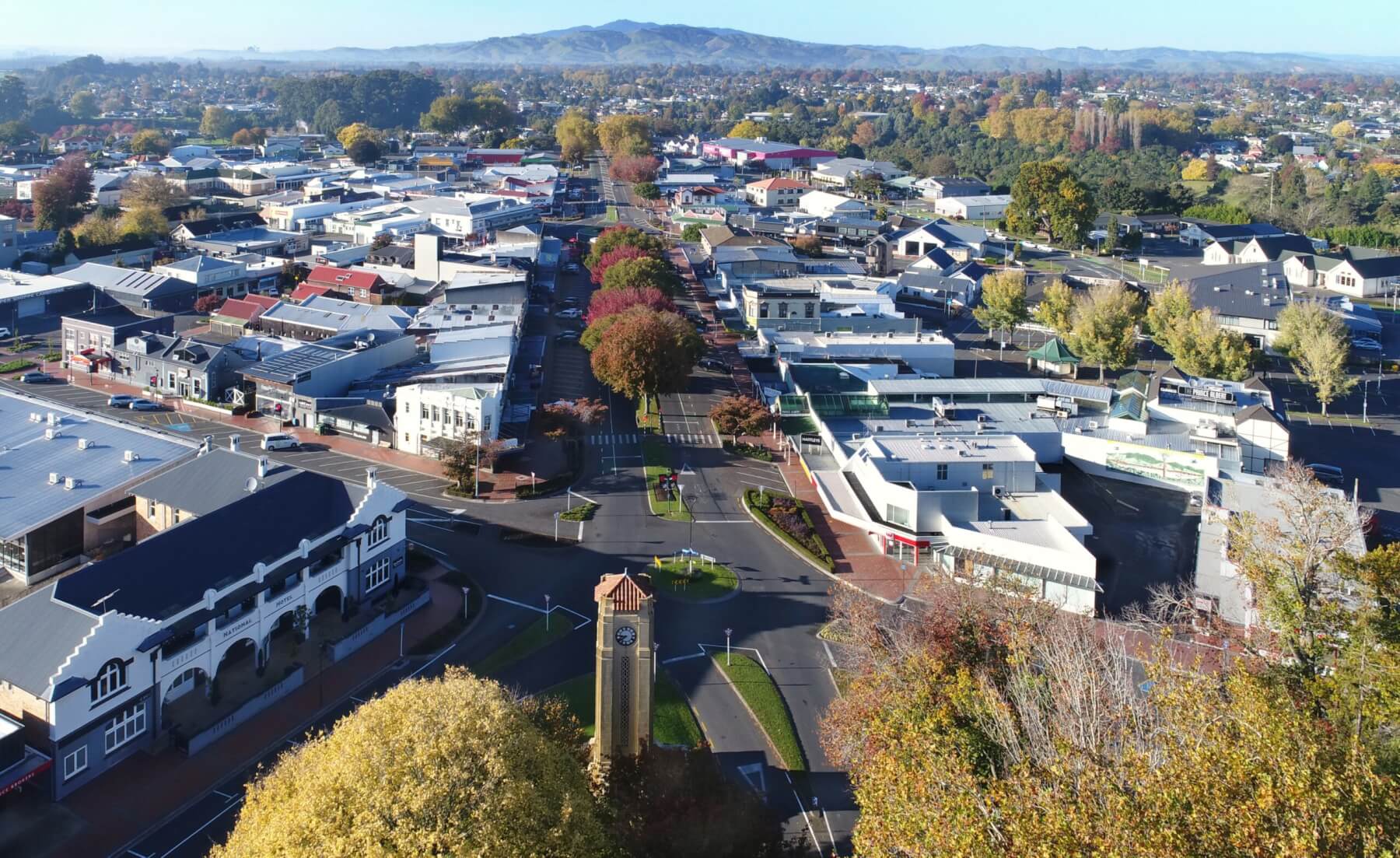
The road to Maungatautari from the Town Clock showing why the grid laid out in 1863 might be five degrees out. Photo: Brian Holden.
What Procuta finds interesting from the maps produced at that time and later is the town grid is almost facing north, but not quite. It is about five degrees off.
“I would love to have the rationale for that,” he said giving a possible answer with a drone shot looking from the Town Hall and Town Clock towards Maungatautari and Pukeatua and Victoria Street follows it directly. I think that’s a marvellous clue.”
He recalls when he returned to Cambridge 30 years ago. There were lots of empty shops and it was an older village type place.
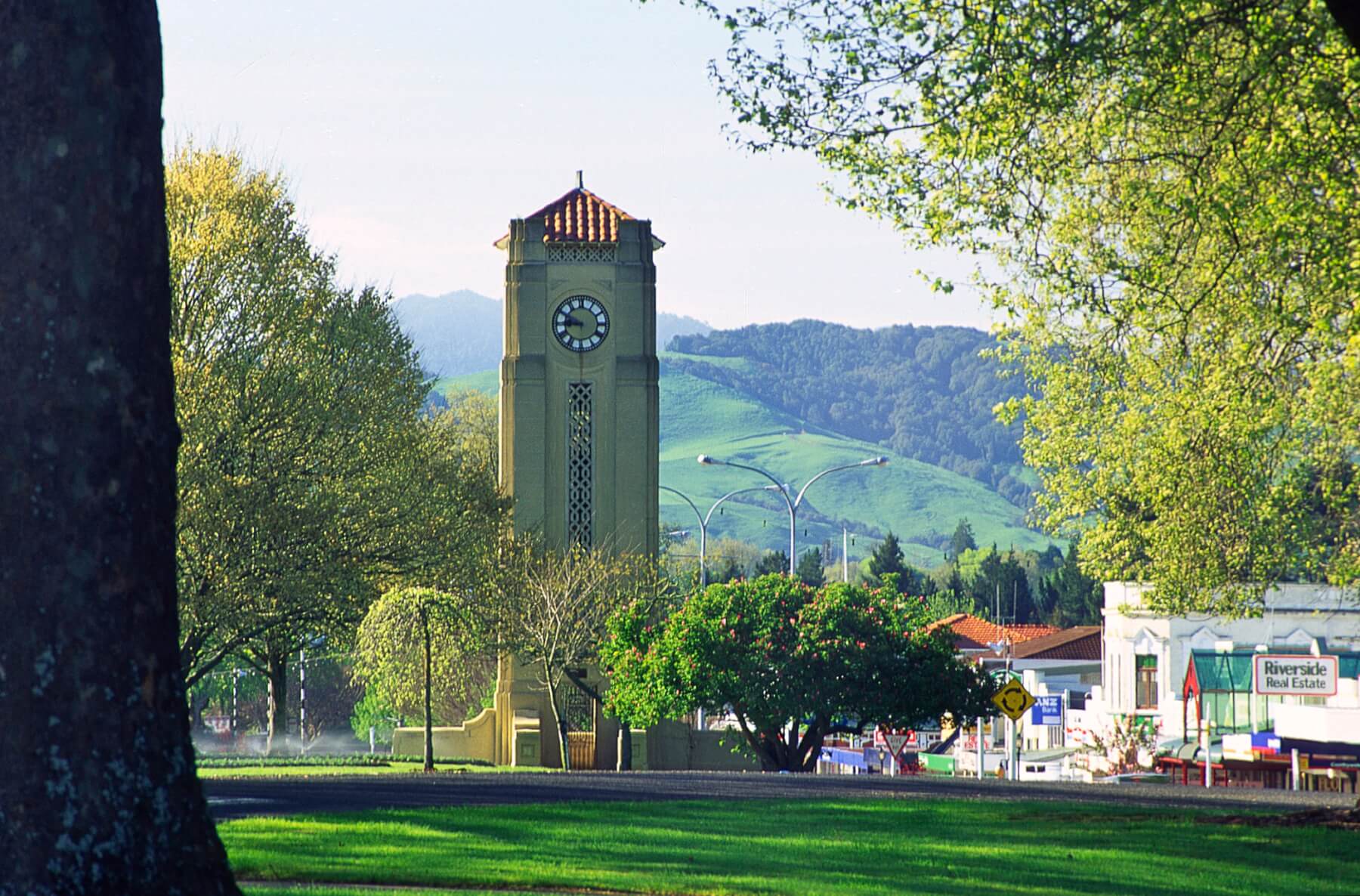
The Cambridge Town Clock photo taken in 1996 showing Maungatautari and Pukeatua in the background made to look closer by the use of a telephoto lens. Photo: Antanas Procuta.
He showed the audience a photo he took with a telephoto lens in 1996 of the Town Clock with Maungatautari and Pukeatua in the background. At the time a woman accused him of manipulating the image.
“A lot people overlook that (view) and don’t see it.”
The Town Clock is one of his favourite buildings in Cambridge and he produced a watercolour drawn prior to its construction after the 1931 earthquake.
That original view or even the one he photographed 38 years ago showing Maungatautari cannot be seen now because there is a golden elm in front.
Under council policy, the tree cannot be removed unless it is dead or dying.
Procuta, the son of architect Viktoras Procuta who retired in the mid-1990s and died three years ago, started his architect’s practice in Cambridge but is now based in Hamilton as Paua Architects.
He has a particular passion for restoration and reuse of Waikato historic buildings and his firm has been involved in several high-profile developments both in Hamilton and the greater Waikato and in Cambridge including Le Quesnoy Place, Cambridge Park, Papillon Townhouse in Hamilton Road and the Police Station.
Cambridge has been fortunate so many developers have wanted to leave a lasting legacy for the town, he said.
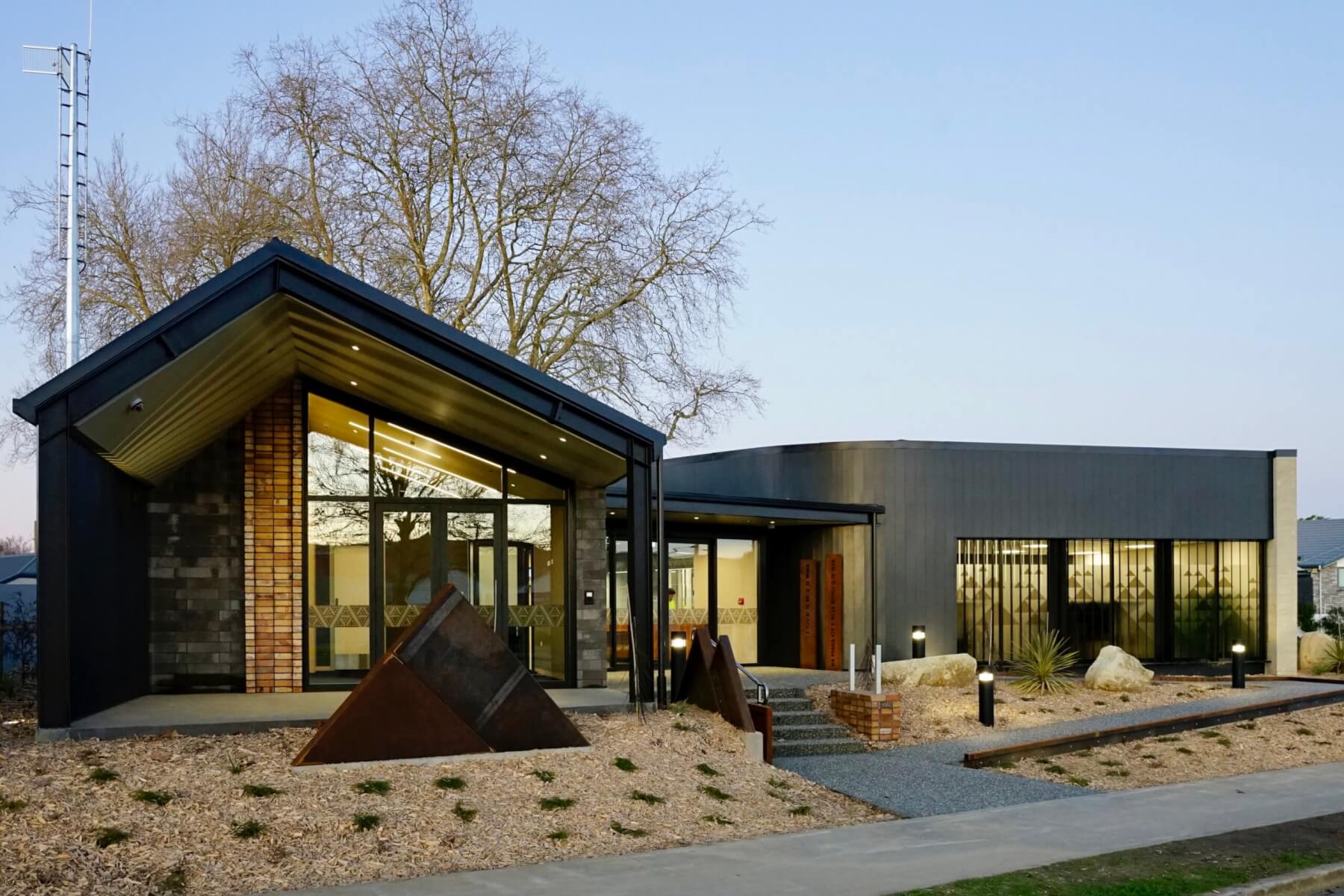
Cambridge Police Station
Recent projects like the Police Hub have incorporated modern design elements while respecting the town’s heritage and cultural significance.
“We’re at a huge changing point in Cambridge,” said Procuta pointing to recent developments like the velodrome and usage at Lake Karāpiro as “transformational”.
“The velodrome is a great piece of architecture which brings in lots and lots of young people as teenagers to Cambridge, then they stay here and have their own families.”

A cycling team outside the Velodrome. Photo: Danielle Fuller
The challenges of urban development will include the need for higher-density buildings to accommodate growth while preserving the town’s character.
“There’s a challenge here. What does the future of Cambridge look like?” he said.
“We’ve typically got single storey and two storey buildings in the main centre of town,” he said while development was eating into neighbouring farmland.
“I think that’s got issues.”
It meant more people had to travel by car or bus into town.
“We need to be thinking is it okay to do three stories or four storey (buildings). It’s going to be quite challenging but if you look at European towns, old historic towns and actually we’ve got the width across the streets…. It’s something we need to seriously contemplate and probably embrace.”
Procuta praised the community response to saving Cambridge’s heritage – despite the financial challenges – pointing to the Town Hall, Clock Tower and the Water Tower as examples.
“I think that really shows the power of people understanding heritage but also using their power as citizens to say: ‘actually this is really important to us’.”
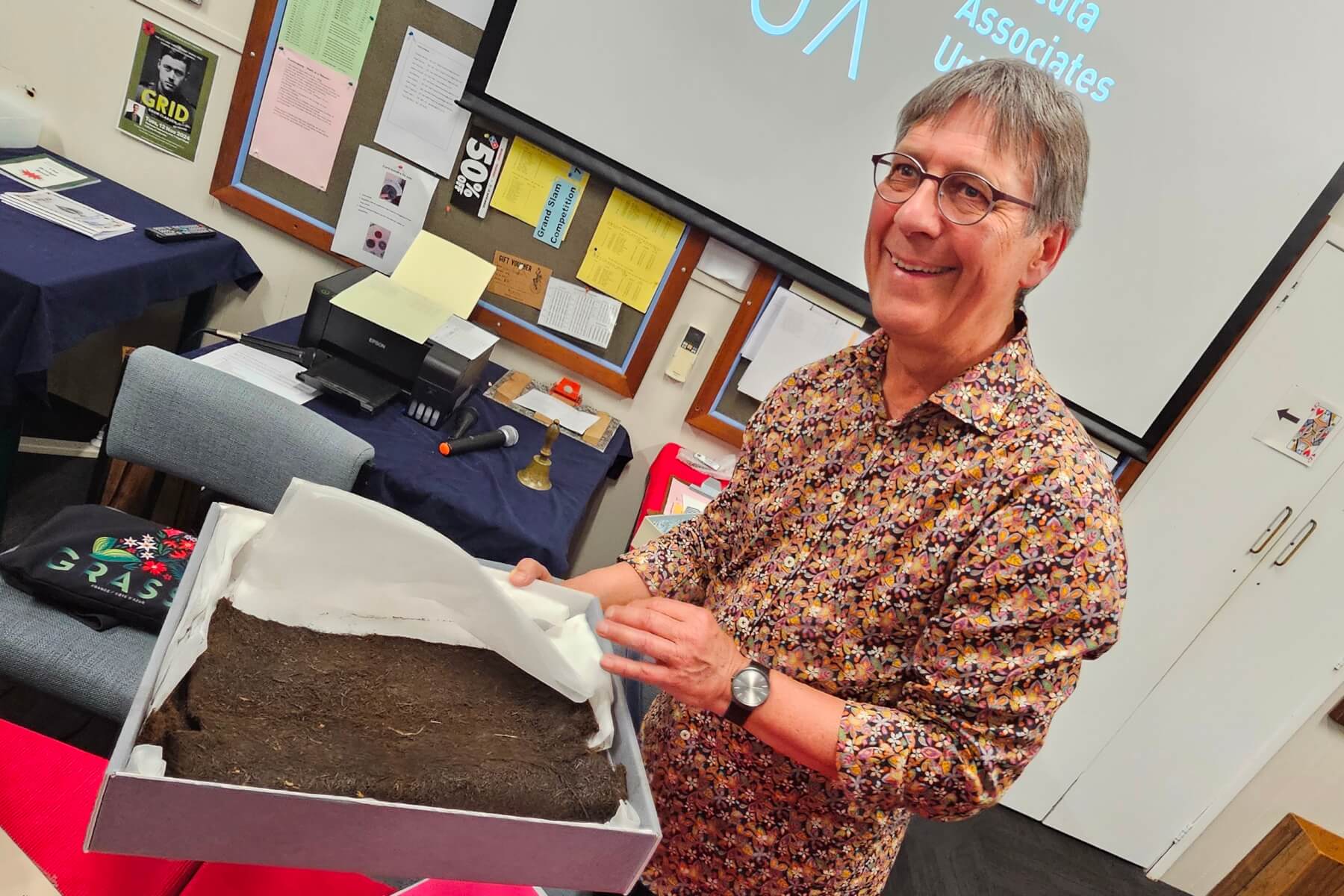
Antanas Procuta brought along a box with ragfelt taken from below the roof of the old Court House, now Cambridge Museum, which had proven to be a very early example of insulation. Photo: Mary Anne Gill.








